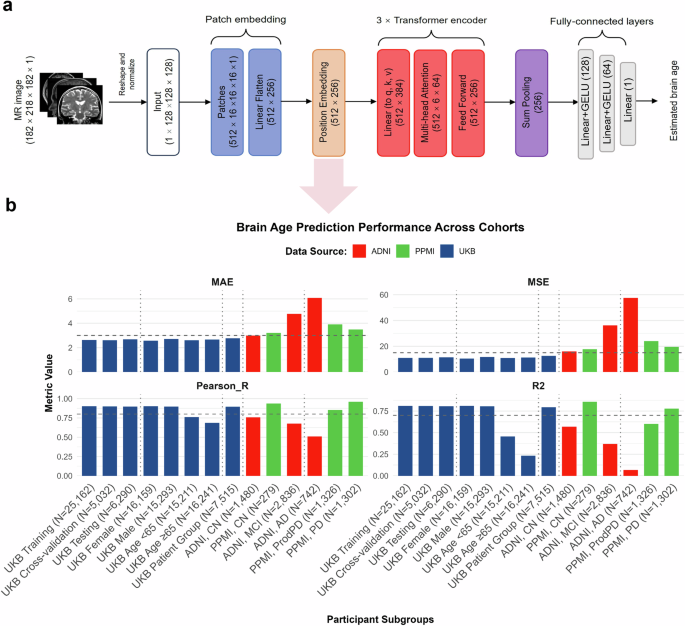Report on Alcohol Consumption Among U.S. Transplant Hepatologists and Implications for Sustainable Development Goals
Introduction: A Challenge to Sustainable Development Goal 3
A recent survey of 185 practicing transplant hepatologists in the United States reveals a significant public health concern that directly challenges the achievement of Sustainable Development Goal 3 (SDG 3), which aims to ensure healthy lives and promote well-being for all. The findings indicate that 26.3% of these specialists screened positive for unhealthy alcohol use. This rate is alarmingly high, particularly as these medical professionals specialize in liver diseases, for which alcohol is a primary cause. This situation underscores a critical gap in fulfilling SDG Target 3.5, which calls for strengthening the prevention and treatment of substance abuse, including the harmful use of alcohol, even among healthcare providers themselves.
Key Survey Findings
The exploratory survey highlights several data points that conflict with the principles of promoting health and well-being within the medical community and the broader population.
- Elevated Rates of Unhealthy Use: The 26.3% positive screening rate among transplant hepatologists is substantially higher than the 15.3% rate found among U.S. physicians overall.
- Comparative Data: While general hepatologists demonstrated a lower rate of 11.2%, the prevalence among transplant specialists remains a significant concern.
- Daily Consumption Patterns: A total of 68% of surveyed hepatologists reported alcohol use, with a concerning 5% consuming three or more drinks per day, a pattern associated with significant health risks.
Systemic Workplace Issues and Linkages to SDG 8 and SDG 5
The survey suggests that the high rate of alcohol use may be symptomatic of systemic issues within the medical profession, connecting the findings to other Sustainable Development Goals.
- SDG 8: Decent Work and Economic Growth: The report posits that a “toxic nature of medical culture” may be a contributing factor. This points to a failure in providing a safe and secure working environment as outlined in SDG Target 8.8. Fear of career implications and a lack of confidence in confidential counseling programs prevent physicians from seeking necessary support, undermining the goal of decent work for all.
- SDG 5: Gender Equality: The survey identified that men had higher scores for unhealthy alcohol use. This gender-specific health outcome highlights the importance of addressing health vulnerabilities and societal pressures that disproportionately affect different genders, a core component of achieving SDG 5.
Institutional Integrity, Stigma, and SDG 16
The reluctance of physicians to seek help or report alcohol use accurately has profound implications for the integrity of healthcare institutions, a key focus of SDG 16 (Peace, Justice and Strong Institutions). The pervasive stigma surrounding substance use among medical professionals suggests a weakness in institutional accountability and effectiveness (SDG Target 16.6). If the very individuals tasked with counseling patients on health are unable to access support due to institutional culture, the strength and trustworthiness of the entire healthcare system are compromised. The potential for significant under-reporting in surveys further indicates that the problem may be greater than observed, posing a serious threat to institutional transparency and the well-being of its workforce.
Citation
Coe, Christopher; Prause, Nicole; Benhammou, Jihane N.; Singh, Jasleen; Shetty, Akshay; Trivedi, Hirsh D.; Yanny, Beshoy; Shoptaw, Steve; Pourmand, Kamron; Patel, Arpan A.. One in 4 transplant hepatologists in the United States screens positive for unhealthy alcohol use. Hepatology Communications 9(11):e0819, November 2025. | DOI: 10.1097/HC9.0000000000000819
Analysis of SDGs, Targets, and Indicators
Which SDGs are addressed or connected to the issues highlighted in the article?
-
SDG 3: Good Health and Well-being
The article directly addresses health and well-being by focusing on the “unhealthy alcohol use” among transplant hepatologists. It discusses the prevalence of a specific substance abuse issue within a professional medical community, highlighting the health risks associated with alcohol, which it describes as a “class 1 carcinogen” and the “leading cause of liver disease.” The entire discussion revolves around the physical and mental health challenges faced by this group, including the potential impact of a “toxic nature of medical culture.”
What specific targets under those SDGs can be identified based on the article’s content?
-
Target 3.5: Strengthen the prevention and treatment of substance abuse, including narcotic drug abuse and harmful use of alcohol.
This target is central to the article’s theme. The survey’s focus on identifying the percentage of hepatologists who screen positive for “unhealthy alcohol use” is a direct examination of the harmful use of alcohol. The article expresses alarm that “26.3 percent screened positive for way too much alcohol use” and that “5 percent consumed three or more drinks per day,” which are clear instances of harmful consumption patterns that this target aims to address. The discussion about the stigma preventing doctors from seeking help also relates to the “treatment” aspect of this target.
Are there any indicators mentioned or implied in the article that can be used to measure progress towards the identified targets?
-
Indicators for Target 3.5
The article provides several quantitative data points that serve as direct indicators for measuring the prevalence of harmful alcohol use. These can be used to track progress toward reducing substance abuse. The specific indicators mentioned are:
- The prevalence rate of unhealthy alcohol use among transplant hepatologists (26.3%).
- The prevalence rate of unhealthy alcohol use among U.S. physicians overall (15.3%).
- The percentage of hepatologists who reported any alcohol use (68%).
- The percentage of hepatologists who consumed three or more drinks per day (5%).
- A demographic breakdown of alcohol use, noting that “Men had higher scores for alcohol use.”
These statistics are concrete measurements that align with the objective of monitoring and reducing the harmful use of alcohol as specified in Target 3.5.
SDGs, Targets, and Indicators Table
| SDGs | Targets | Indicators |
|---|---|---|
|
SDG 3: Good Health and Well-being Ensure healthy lives and promote well-being for all at all ages. |
Target 3.5: Strengthen the prevention and treatment of substance abuse, including narcotic drug abuse and harmful use of alcohol. |
|
Source: science20.com






